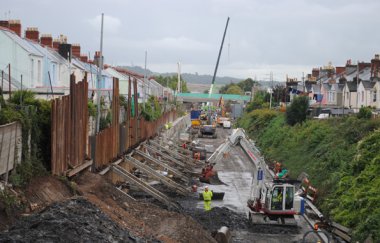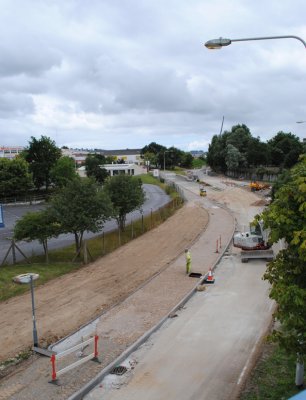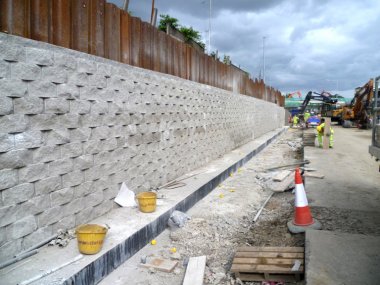East End Community Transport Improvements Scheme |
|
Design Only Award
Design: Plymouth Transport and Highways (Amey Consulting)

The Project
The East End CIF project seeks to secure the foundations of the wider Eastern Corridor High Quality Public Transport network through the creation of a bus priority corridor that runs through Plymouth’s East End along Embankment Road, as well as securing sustainable links for walking and cycling facilities.
The new bus corridor is to be facilitated by displacing Plympton/A38-bound traffic from the city centre to a widened two-way Gdynia Way link. The project also seeks to displace traffic from Plympton/the A38, heading towards Plymstock, away from Hele’s Terrace via a link road through the Gateway Site.

The scheme delivers significant capacity improvements for all modes of transport and provides benefits to the East End community by effectively halving the amount of eastbound traffic on Embankment Road within the shopping area, thereby helping to regenerate that part of the East End.
Plymouth Transport & Highways wanted to use CEEQUAL to independently assess the scheme's environmental performance. Plymouth City Council is committed to reducing the impact that projects have on the local environment and CEEQUAL offered a good framework to ensure that the scheme was taking advantage of current best practice and conforming to high environmental standards.

Project management
Informed The early appointment of an environment manager within the project team, who was identified as responsible for managing the environmental aspects of the project, ensured that an environmental impact assessment and associated mitigation plans were undertaken, completed and implemented to inform the design process.
Land use
The scheme is integral to providing public transport priority, the development and environmental enhancement of the East End area, protection of this area from future flooding events and improved opportunities for mixed-use development. The scheme also minimises land take outside of the existing highway boundary, thereby maintaining adjacent public open space and recreational land.
Landscape
Plymouth City Council's urban designers and development planners were integrated in the design team to advise on public realm aspects of the project. Their proposals were then considered and assessed to see how they could best be incorporated into the proposed works.
Ecology and biodiversity
The ecological value of the site was assessed through the Environmental Impact Assessment. Although no land or species of high ecological value were identified within the project area, mitigating actions were identified and included tree planting, new habitat creation and the preservation of existing habitat.
The historic environment
Although the scheme was assessed as having minimal archaeological impact, liaison took place with a specialist archaeological reclamation organisation with a view to allowing them access to the site ahead of site clearance works.
Water resources and the water environment
A project-specific Flood Risk Assessment was commissioned to assess surface water and tidal impacts on the scheme.
A report was also produced to assess the existing condition of the highway drainage network in an area of the project subject to flooding. This report included details of the design proposals to mitigate the impact of additional surface water run-off.

Energy and carbon
The project seeks a modal shift onto public transport, thereby reducing carbon emissions from private vehicles. Street lighting was designed to low-wattage, low-light-pollution specifications.
In accordance with Plymouth's Direction Signing Strategy, the number of illuminated road signs in the new works has been minimised. Solar-powered traffic counters and TMP bollards are also being utilised.
Material use
90% of the existing road area has been retained and incorporated into the new scheme design.
Waste management
A Site Waste Management plan is in place and the use of electronic waste transfer notes assessed as part of ongoing discussions wit the Environment Agency.
Transport
The scheme will result in the removal of 10,000 vehicle movements each day from a residential corridor within the East End area. This has been shown through assessment to provide improvements in air quality and noise reduction.
Effects on neighbours
Following a Health Impact Assessment, noise and air quality mitigation measures have been incorporated into the design, having been identified as providing benefits to local residents.
Community relations
A consultation plan was prepared giving the local community timely opportunities to feed into the design and project detail. The results were fed back to consultees through a consultation report. A consultation officer from Plymouth City Council has been working in conjunction with an Amey Communications Manager.
Further to a number of public consultation events, the recorded results have been collated, a decision matrix agreed within the project design team and the results fed back to respondents.

